9 Gorgeous Ornamental Grasses for Your Yard
Updated: Aug. 25, 2022
Low-maintenance and versatile, ornamental grass is a great way to add color, movement and seasonal interest to your yard.
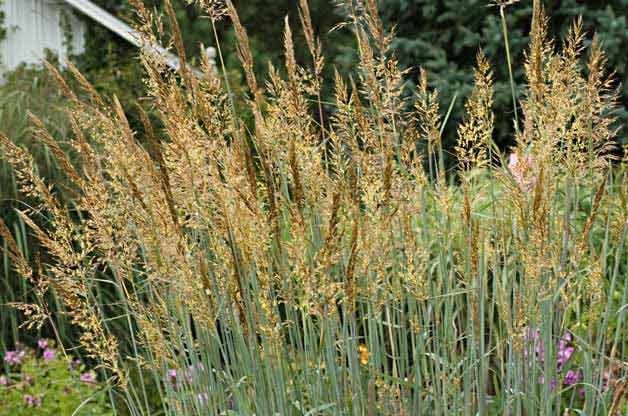
Ornamental Grass: Indian Grass
Sorghastrum nutans • Zones 5 to 8
Indian grass will add stunning greens, glowing bronzes and cool blues to your garden throughout the year with little work on your part. This ornamental grass grows up to 4 feet high and 2 feet wide, giving it a spectacular columnar effect.
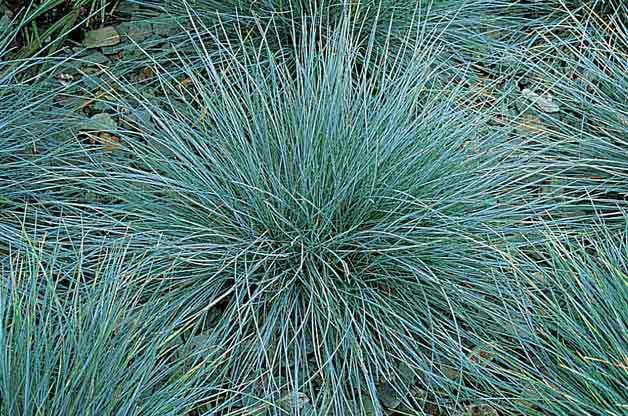
Blue Fescue
Festuca glauca • Zones 4 to 8
Lovers of these ornamental grasses don’t mind having the blues at all. You’ll warm up to blue fescue, too, for its compact, container-friendly tufts and bright hue. It grows to about 6 to 12 inches tall.
We found beautiful blue flowers for every garden.
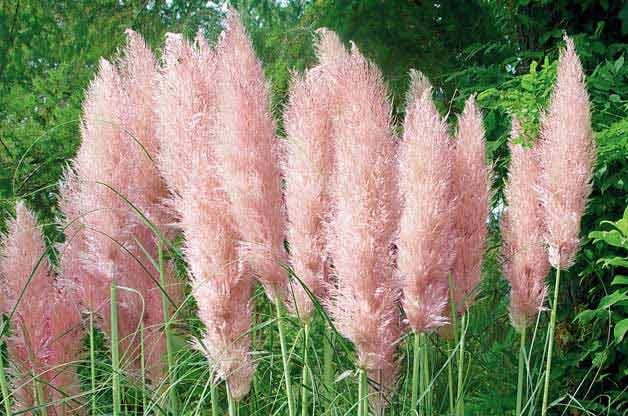
Pampas Grass
Cortaderia selloana • Zones 6 to 11
Add some drama to your yard with these fast-growing, eye-catching plumes. Feathery pampas grass grows up to 10 feet high and 5 feet wide, but some of the more compact cultivars, including Pumila and Compacta, produce plants that are about 6 feet tall. Pampas grass is invasive in some parts of the United States and should not be planted in California or Hawaii.
Pretty in pink: Try these 10 shrubs with pink flowers.
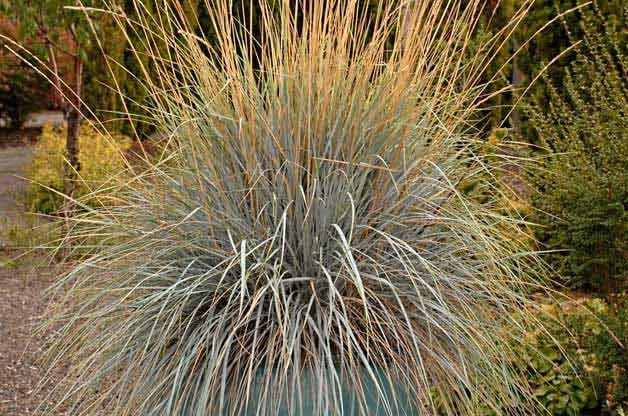
Blue Oat Grass
Helictotrichon sempervirens • Zones 4 to 8
Planted in a border or container, or used as a stand-alone accent, gardening with ornamental grasses like the blue oat grass makes a big statement in any backyard. This ornamental attains greater height and stronger blades than blue fescue while showing off a similarly striking shade of blue. For best foliage color, give it full sun in cool regions and light shade in warm areas.
Discover more easy plants you can grow in containers.
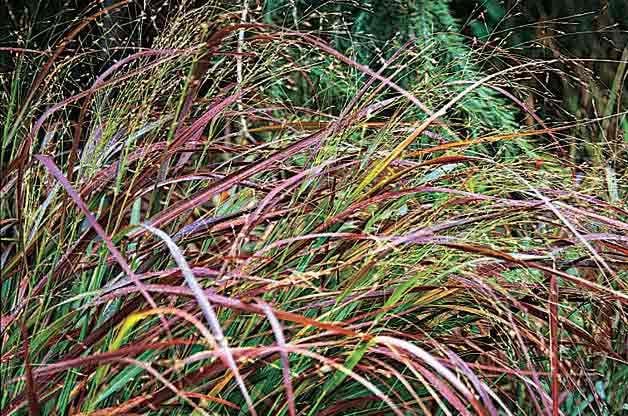
Switchgrass
Panicum virgatum • Zones 4 to 9
This easygoing and versatile ornamental grass is a good choice for wet conditions, drought or partial shade, as long as it’s planted in moist, well-draining soil. Growing narrow and upright with a cloud of seed heads in fall, switchgrass can reach more than 5 feet tall. This grass is native to North America. However, it reseeds readily, so buy from a regional source.
Check out the top 10 easy-to-grow native plants.
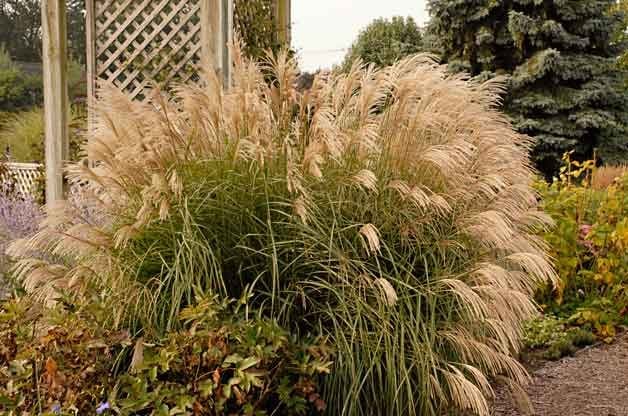
Miscanthus
Miscanthus sinensis • Zones 4 to 9
You’ll be on cloud nine with the fluffy tops of this ornamental grass. The big, showy flower heads and height of up to 12 feet give it a graceful profile. In autumn, its silky gray panicles turn maroon or purplish-brown. Plant miscanthus in a sun-drenched area. Be sure to only grow sterile cultivars, as it can be invasive.
Check out the best fall shrubs to grow.
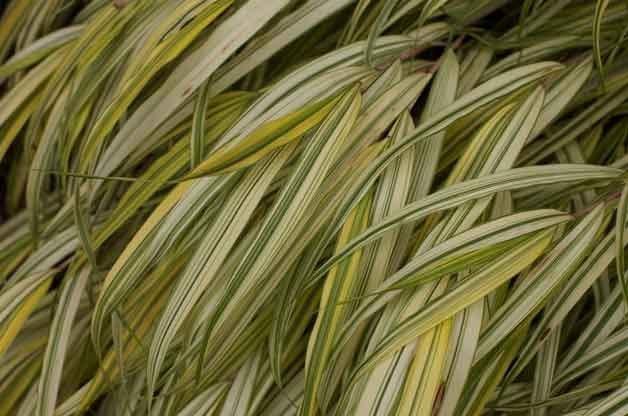
Japanese Forest Grass
Hakonechloa macra • Zones 5 to 9
This slow-growing plant has dense masses of arching golden stems that take on a reddish-pink tinge in fall. To enliven a shady area, plant it as a specimen, ground cover or border.
Psst—don’t miss the top 10 golden plants to make your garden glow.
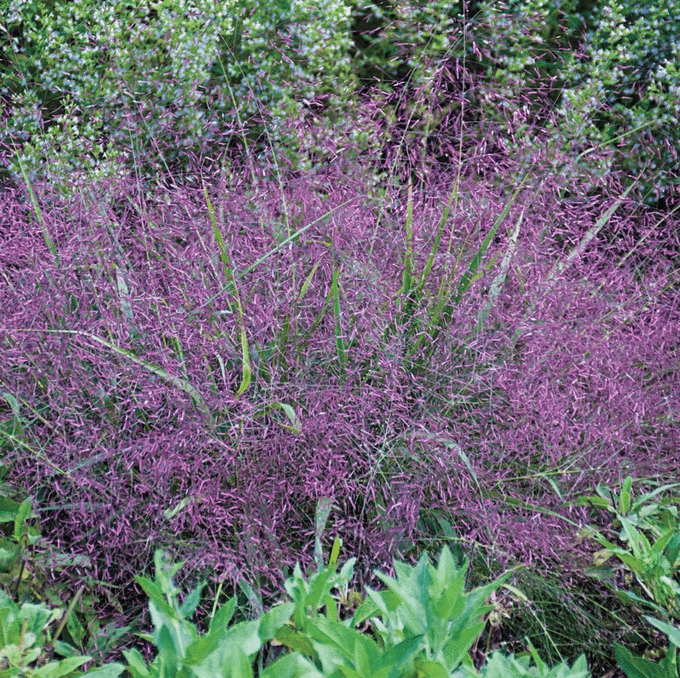
Elliott’s Lovegrass
Eragrostis elliottii • Zones 6 to 10
Native to the Southeast, this ornamental grass has interesting colors when viewed up close, and is incredibly easy to grow. In the late summer and fall, the seed heads (inflorescences) appear, adding an airy feeling and providing food for small birds. If you live too far north to grow Elliott’s lovegrass, you can grow purple lovegrass (Eragrostis spectabilis) instead. Look for both at native plant nurseries in your area.
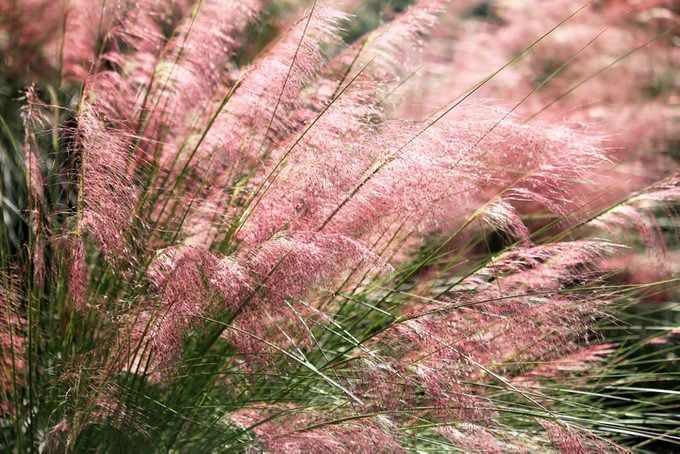
Muhly Grass
Muhlenbergia capillaris syn. M. filipes • Zones 7 to 10
A foolproof southeastern native, muhly grass is green and full most of the year, growing to about 3 feet by 3 feet. In October the plumes rise above the body of the grass, putting on a show that’s unequaled among ornamental grasses. By late in the year, the feathery purple fronds fade to a soft light brow. Planted in groupings, it creates shelter for small creatures including butterflies. Songbirds love the seeds produced in the fall, and may even pluck dead stems to use in building their nests.
